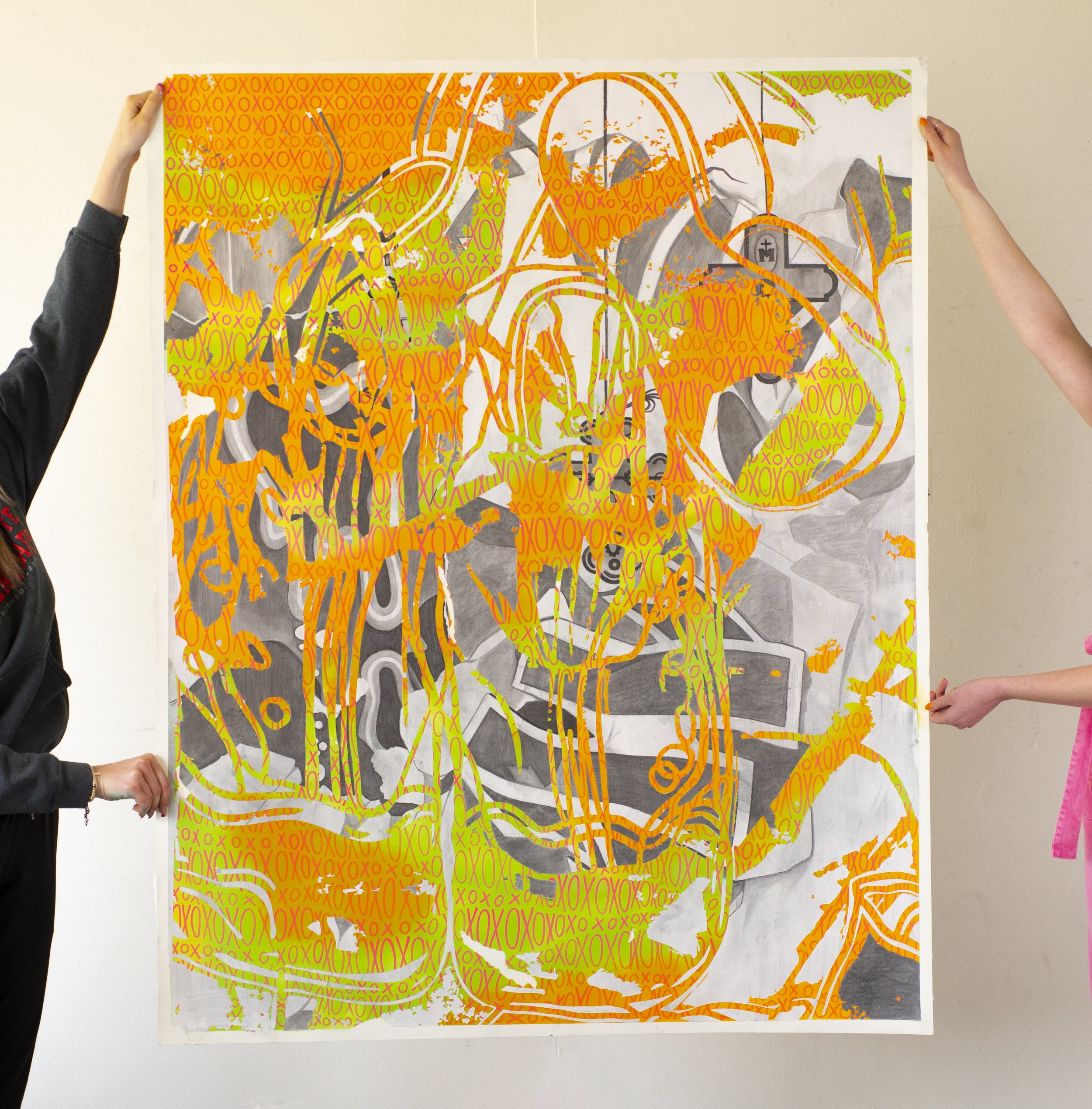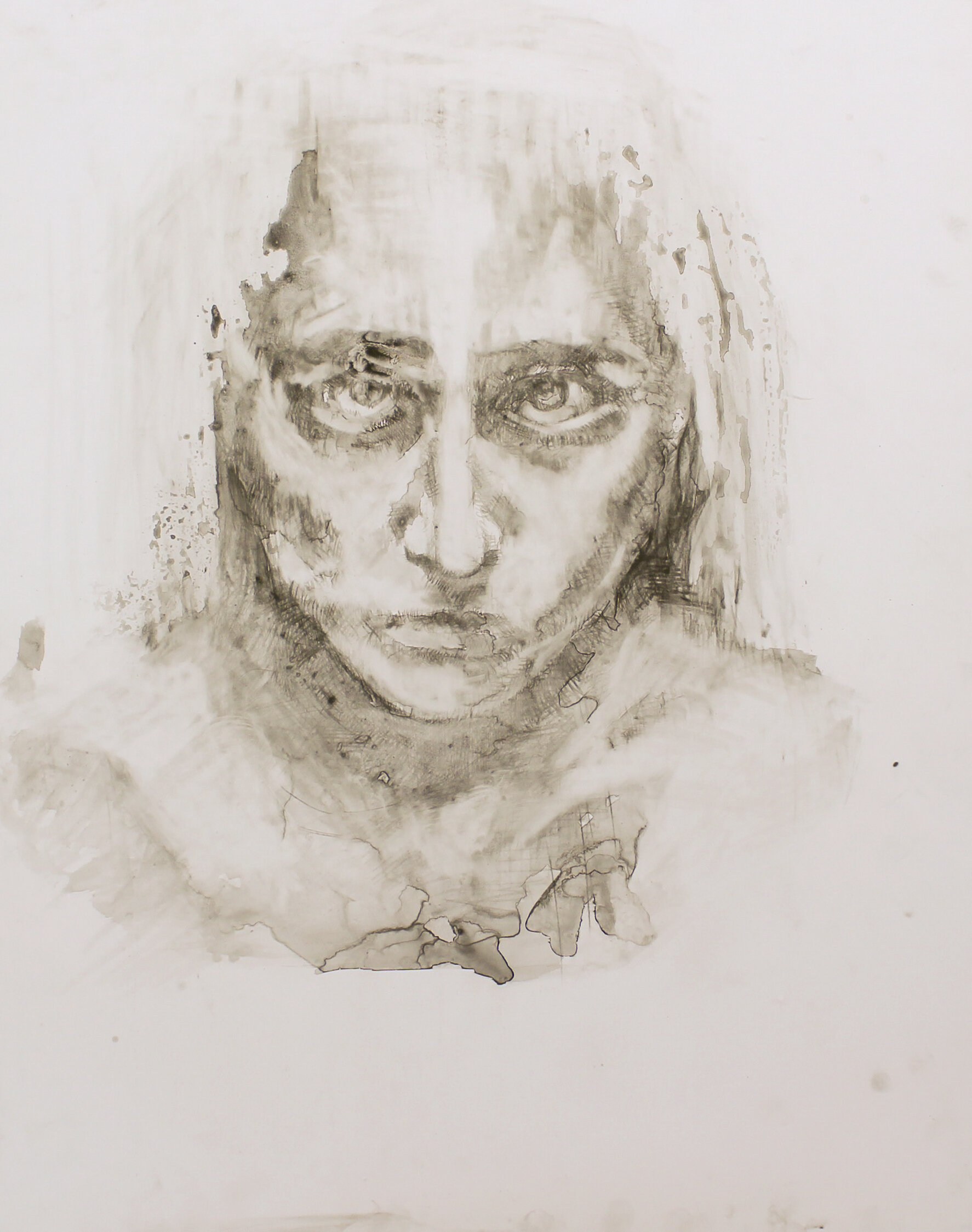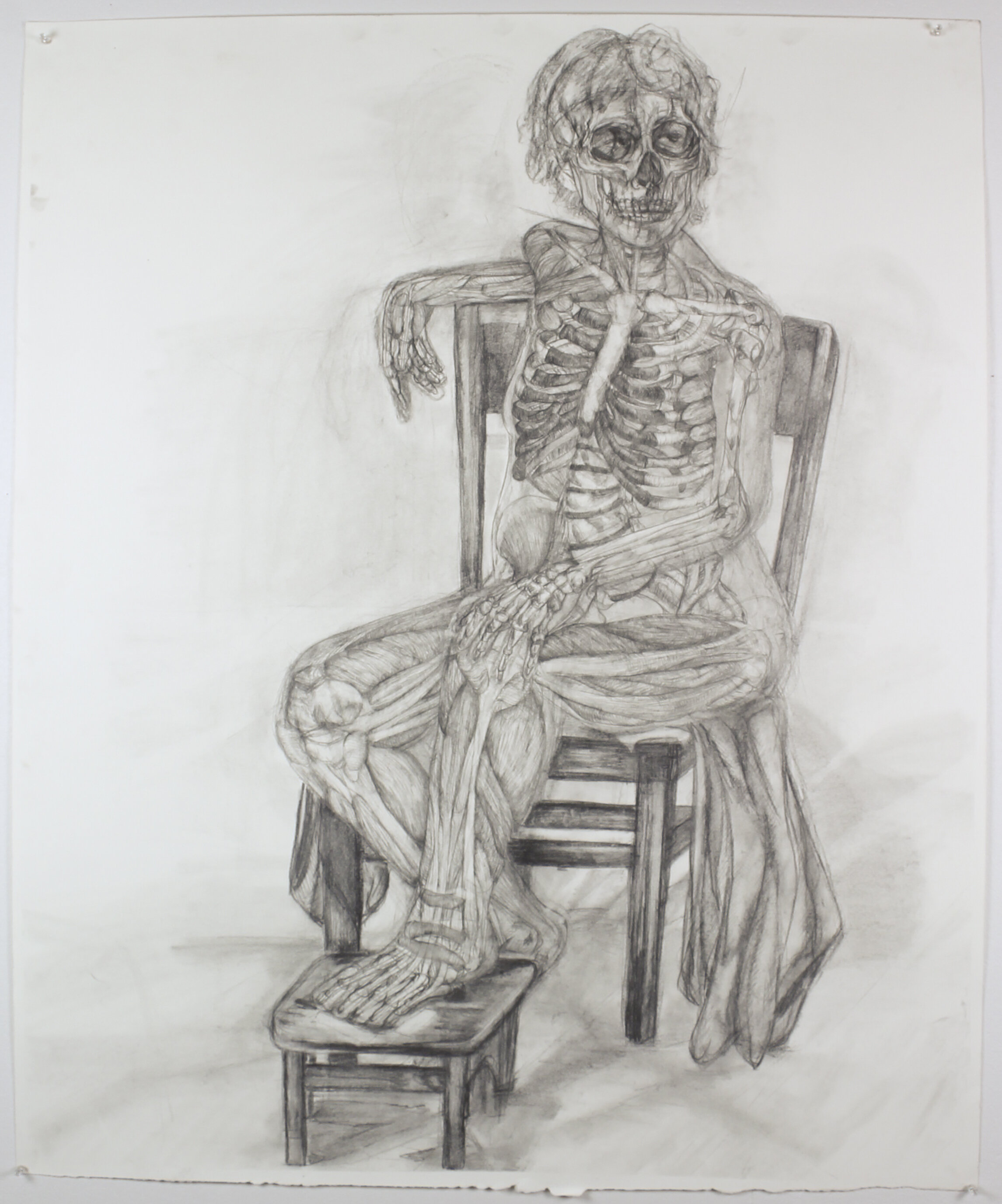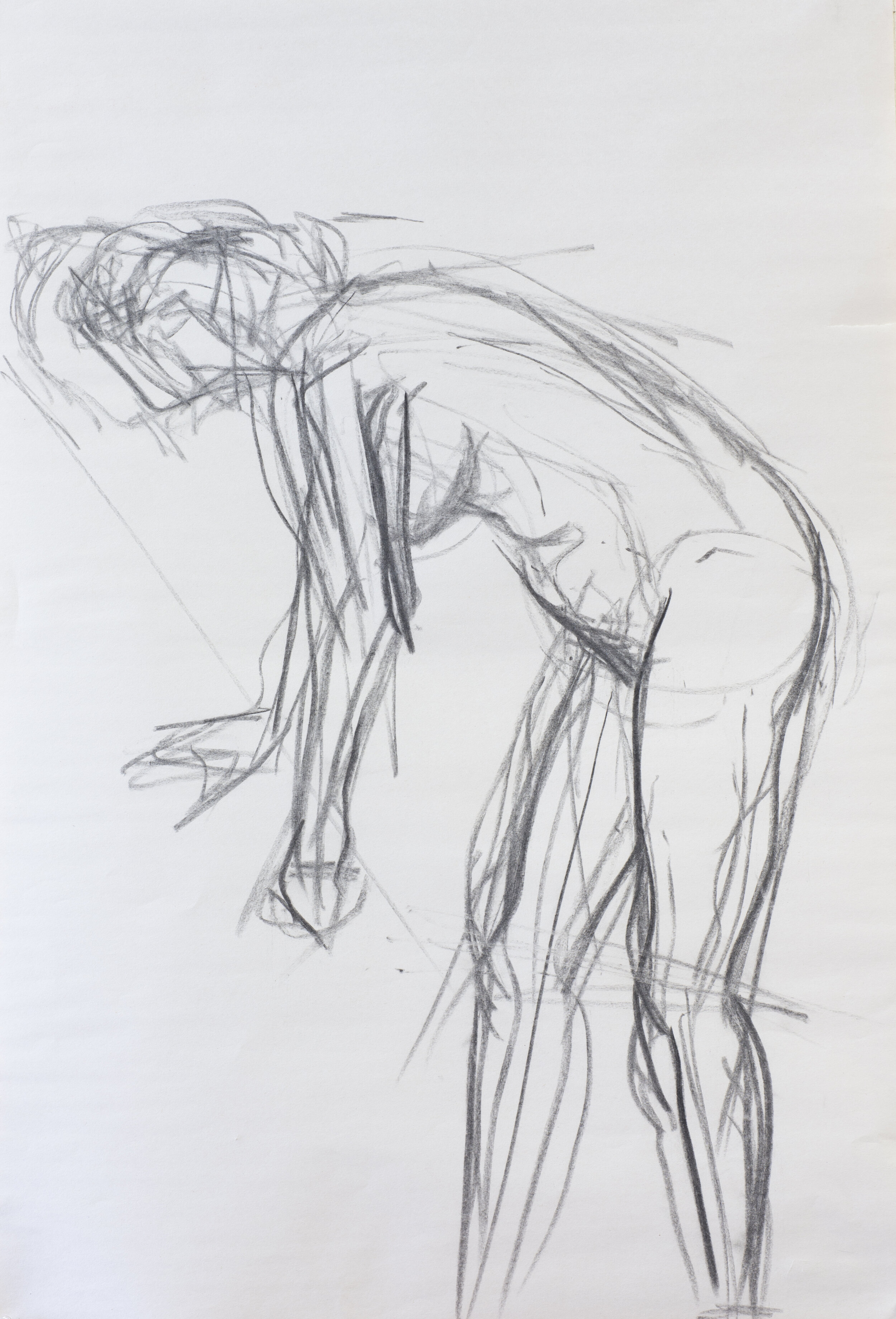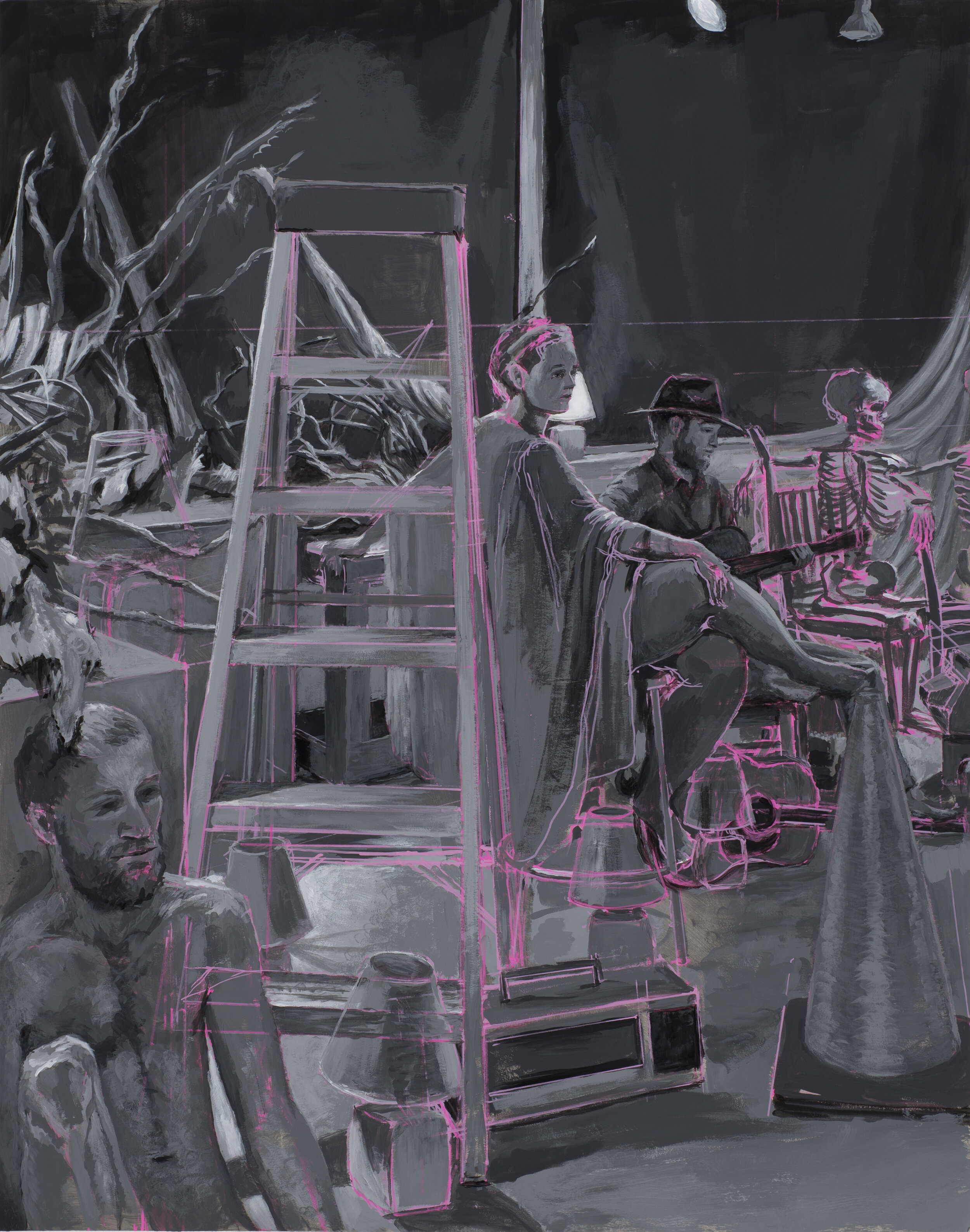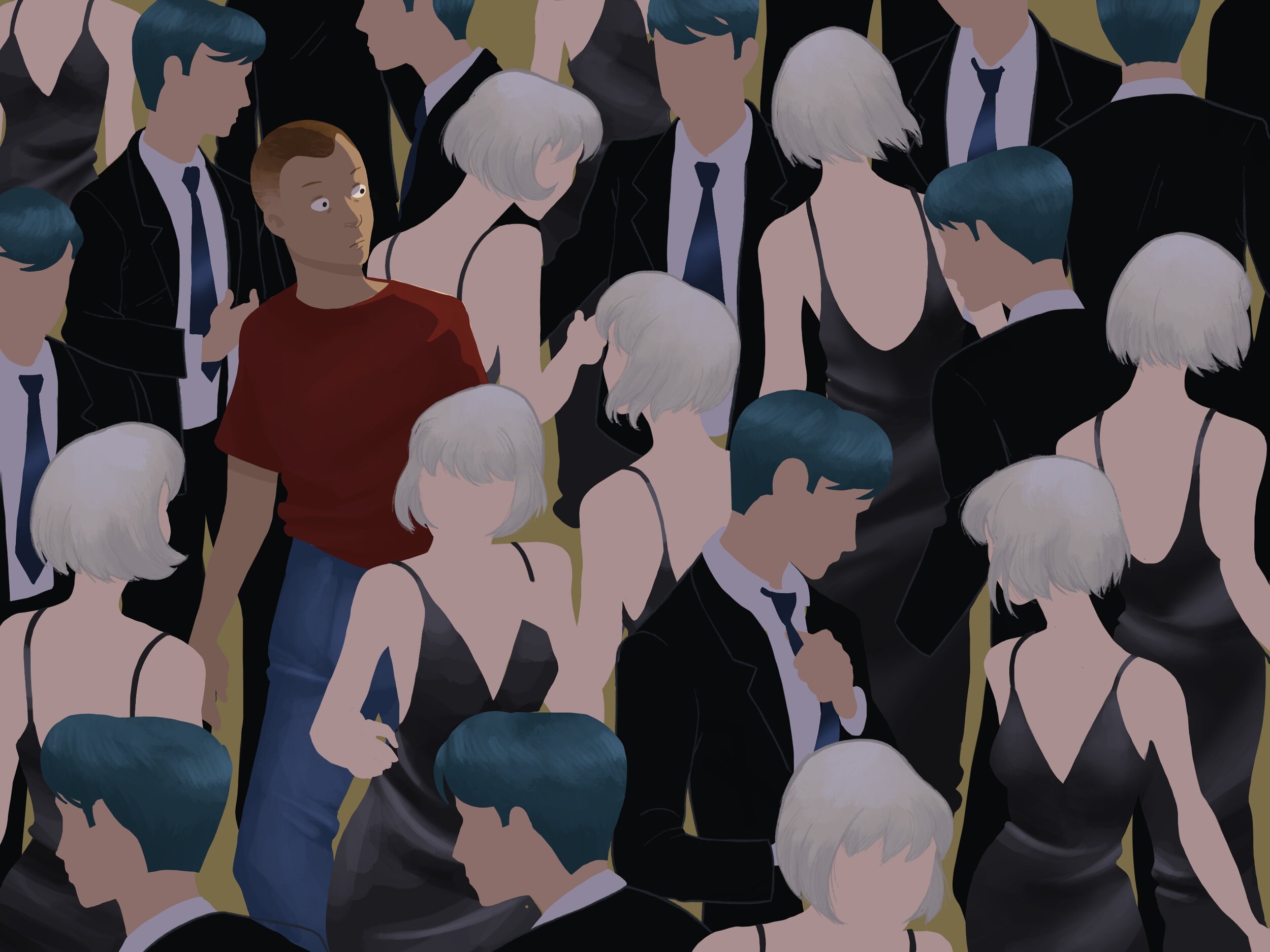BFA / BA
The BFA Drawing program builds on a strong foundation in formal and perceptual training, followed by an intense exploration of the diversity of contemporary drawing media and processes. Throughout the program emphasis is placed on developing a solid base of technical skill, while also cultivating creative problem solving skills.
Upper level drawing courses for BFA students and Drawing majors foster the development of a personal vision and strong working habits by emphasizing the exploration of critical and conceptual approaches to drawing. Exposure to issues in contemporary drawing and interdisciplinary collaborative practices encourages students to become aware of the expansive nature of the field. Listed below are brief descriptions and examples of student work from each of the BFA Drawing courses in our program.
Drawing Elements
This course explores the language of drawing and its creative application. Students will be introduced to a range of drawing materials and methodologies which include skills for translating with accuracy and producing expressive effects. Each student will be challenged to explore how their own personal approach to materials and methods can be creatively applied to various drawing problems. For each major project, traditional materials and methods will be complemented with implicit challenges to think expansively about drawing’s potential. Investigations are positioned to enable each individual to learn to see with acuity and develop fine motor skills in order to create meaningful and accomplished drawings in different forms.
Invented Images
This course investigates drawing strategies for constructing images from the starting point of imagination and invention as a means to create a body of personalized work. Approaches such as invention and sourced imagery are delivered as a means for generating abstract and representational imagery. A wide range of drawing media and approaches will be explored, including collage and color, along with the use of digital tools as a means for translation, organization and experimentation. Special emphasis will be placed on research and methodologies for sourcing and interpreting images. The course delivers multiple strategies for developing an individualized studio practice and opportunities to create a series of personalized works.
Perceptual Studio
This course investigates drawing strategies for generating images derived from direct perceptual experience in order to create a body of personalized work. Projects utilize perceptual experience as a departure point for creating both abstract and representational images. Investigations explore on-site location drawing, self-designed environments in the studio, and the use of color. Special emphasis will be placed on the particular qualities, advantages and challenges associated with direct experience and how that may influence artistic approach, methodologies and content. The course includes identifying and cultivating qualities that are unique to each individual while learning strategies for creating a series of personalized works that challenge subject, material and process.
FIGURE DRAWING
Investigation of the human form through drawing, with special emphasis on gestural modes of working. Careful analysis of human anatomy, including internal and externally visible structures, position and movement of joints, as well as proportion and their variations among different models.
ILLUSTRATION
This course will challenge students to learn to speak with pictures—to develop their command of visual language in order to make images that carry specific, unambiguous meanings. Students will cultivate an intuition for various audiences, and learn to read their work from their viewers’ perspectives rather than their own. They will learn to navigate recognizable cultural symbols and situations, juxtaposing and recombining them; sometimes avoiding clichés, sometimes instead using them to advantage. Projects will explore various modes of visual communication and relationships to texts, including narrative, editorial and sequential illustrations.
DRAWING IN THE EXPANDED FIELD
This course is designed to provoke a close examination of the discipline of drawing. We will carefully consider drawing as a practice—what it’s useful for, what it means, and how it exists in relation to other artistic disciplines. We will question our default ideas and assumptions in order to expand our understanding of the potential for drawing as a means of making art. Along the way, we will consider practical issues of creativity—how to generate ideas with artistic potential, how to select and refine the ones with the greatest promise, and how to develop the promise of a single idea by developing a series of works. The first half of this course will consist of a series of assignments, each addressed to question an essential aspect of drawing-ness. The second half of the course will be a sustained exploration by each student: a series invoked by one of the student’s solutions to a problem raised in the first half of the course.
DRAWING PROJECTS
Individual studio projects in Drawing. Each student will propose a self-directed project to pursue over the course of the semester.





